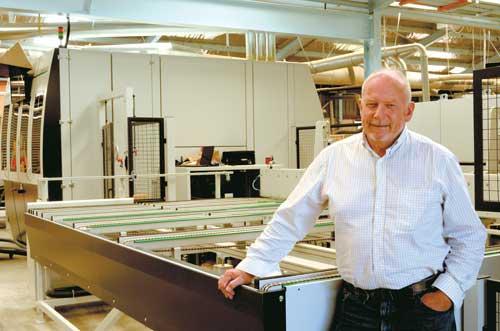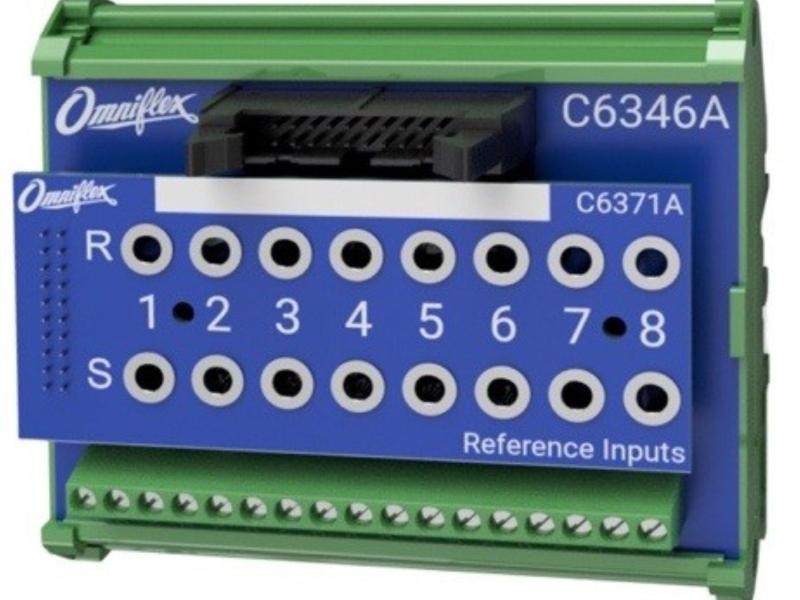Renall Doors, a family-run, Carterton-based manufacturer of custom made wooden interior and sheltered exterior doors, think the NZ market is ripe for top quality European-style double glazed wooden windows. To produce a virtually airtight window the company has just invested 1.5 million NZ dollars in a state-of-the-art profiling centre from German specialist Weinig. Editor Stefan Richter has learned more about this major coup.
Cameron Shaw’s heart and mind were not always set on producing top-quality timber doors and windows. “Renall Doors was started in the 1970s. In 1992 it went into receivership, and I bought the company off the receiver. But my background is not in joinery, it is in construction. The 20 years prior to my buying this company were mainly spent pumping concrete,” remembers the Managing Director of Renall Doors. But at least one of the lessons learned in construction proved transferable to the new line of work. “You have to have the best and most reliable equipment in the world. Equipment of inferior quality tends to let you down at the worst possible moment.”
Armed with this insight Cameron started to reorganise his new company. “When we came here in 1992, nobody had invested any money in this company for a long, long time. Back in 1992, computer-aided in manufacturing was in its infancy. Luckily there was a really clever guy working for us at that time, Vic Jacobson, and he had a unique combination of skills. He understood the joinery business very well, but he also knew his way around a computer, including how to utilise Excel spread sheets.” When you change the dimension of a door, all the sizes of the components also change. “And the ideal tool for crunching all those numbers representing the dimensions of the components was Excel. Using this program Vic finally digitised all our different types of doors into spread sheets.”
Now the company set out to find a machine that was able to read those files, a quest which led them as far as Germany, where wood processing industry specialist Weinig proved able to process the digital data. “We bought one of their machines, a Unicontrol 10, in 1997. Incoming door orders are converted to a computer file, and used by this machine to shape the door frame components. Later we also purchased a Weinig Unimat 23E, this four sided planer/moulder offers press button tool positioning, both machines use throw-away tip tooling which is essential to achieve fine tolerances.”
Then, in 2005, the Germans released their Conturex profiling centre. “We saw this machine on a trip to Germany. It was impressive, but at that time we didn’t think there was enough interest in double glazing in NZ,” remembers Cameron. “We couldn’t justify buying that machine only to manufacture our existing product range. On a trip to Germany last year we learned that the machine had become very popular since its market introduction. And in the meantime NZ had also taken an interest in double-glazed windows.” One thing led to another, and the deal was sealed. “The new Conturex is not only able to manufacture our existing product range, but also enables us to do top-quality European-style double glazed window systems in timber. We pride ourselves on being the first company in NZ with the necessary technology and ability to produce such top-quality, detailed and virtually airtight wooden products.”
Complex profiles in teamwork
The Conturex profiling centre allows for complete processing of timber workpieces for windows and doors in one through feed. There is no need to store workpieces between consecutive process steps, and additional handling and machine set up times are not required. Both infeed and outfeed are automated, the operator only has to supply the mechanised infeed buffer with workpieces. Since the door and window parts leave the machine completely finished on all six sides, they can be immediately supplied for surface treatment or for gluing. The Conturex profiling centre is controlled by a Siemens 840D SL numerical control and a Nexus runtime system. The machine features two 30kW, left or right turning, 0-18000rpm main processing units, a 12.5kW universal spindle, each with a 24 position tool carousel, as well as a multi spindle drill head. Two clamping tables, left and right, carry and position the work pieces past the tools as required. This set up helps achieve a high level of performance.
The four processing units work as a team: the piece of wood is firmly clamped and processed in unit 1, it is then transferred to the clamping table of unit 2, and while the workpiece is further processed there, unit 1 changes the tool with no loss of processing time. Each clamping table utilises up to eleven clamps to firmly hold the workpiece (clamping length of up to 4.5m), with each clamp being CNC controlled. In the Conturex the tools are moved up and down and in and out as the workpiece is moved past the tools while being processed. When it is transferred between the processing units, the reference dimensions of the workpiece are retained. “We have specified our machine with two main spindles and two auxiliary spindles, and each one of them has access to a selection of tools in a tool change magazine,” explains Cameron. “We have about 80 tools at our disposal.” With them the machine is able to saw, mill and drill even the most complex contours.
“The Conturex is unlike any wood machine that you might have seen before,” says Cameron, “It more resembles one of the big and highly flexible tool making machines that are fully enclosed.” The Conturex boasts an enclosed design, with airborne dust being eliminated by the cabin extraction. This enclosed design means that virtually no dust escapes from the machine.
Additionally, there are two very important parts of the whole machine package: Very high precision tooling from the Swiss company Oertli and the programmable software. “Every window and door that we want to produce in the machine is first programmed on a software package from a German company called Klaes,” says Cameron. “This software automatically compiles a cutting list, detailing the required raw materials, hardware and glass panels including a price list for everything.” The data is then directly sent from the office computer to the machine computer via a wireless network. The machine retrieves the production list, the NC code is generated from the data by the Nexus postprocessor, and the individual workpieces are automatically machined. The Conturex knows exactly when to use which tool and changes them automatically. The necessary information is found in the profile and tool database, as well as the speed and direction of rotation of the tool, and the geometric values such as radius, maximum length and collision values. “The finish of the tool is absolutely perfect. And the machine doesn’t need any input and control once the process has started. Everything happens fully automatic,” comments Cameron and adds, “We are also using an AlphaCAM CAD/CAM program to link our existing product Excel software to the Conturex.”
Paradigm shift requires new type of machine
During the last ten years the industry has moved from keeping components for doors and windows on stock to just-in-time manufacturing. “Expensive stock-keeping is passé, individual designs, special dimensions and smallest batches, down to batch size 1, are in demand now,” explains Cameron. “This type of manufacturing asks for a different type of machine, one that can do anything automatically, such as the Weinig Conturex. Renall Doors has been focusing on customised production since I took over the company in 1992. We only build what somebody actually wants. And we can do that seamlessly, because the new machine and its software are very sophisticated, allowing us to detail what window or door exactly is required, and produce the parts to tolerances of 0.2 millimetres.”
Renall Door’s Managing Director is convinced that the domestic market is ripe for their European-style double glazed exterior wooden joinery. “The current NZ Building Code requires a house to achieve certain levels of insulation. There has been a lot of interest from architects, builders and home owners, because they all know that it is very difficult to achieve the required level of insulation without double glazing,” says Cameron. “And the highest thermal ratings can only be achieved with wooden windows. In Europe aluminium has virtually disappeared from joineries. We are going to produce a very high quality product unlike any we’ve ever known in NZ before. These windows will be virtually air tight!”
For more information: Rebecca@renalldoors.co.nz






